


Mis primeros placeres cinematográficos fueron proporcionados por películas programadas en la televisión, pero algunas veces mis padres me mandaban a la cama pronto, demasiado para mi gusto. Al permanecer a la escucha de las películas desde el dormitorio descubrí el llamado espacio “off”.
Durante mi niñez disfruté viendo películas de cine negro y comedias, entre las cuales el más euforizante antídoto a la tristeza que conozco: Cantando bajo la lluvia (Singin in the rain, Stanley Donen y Gene Kelly, 1952). Sin duda, “Good mornin’” puede suavizar cualquier atisbo soterrado de melancolía.
Por aquella época mi género predilecto fue el western. No sabía entonces que algunos de mis westerns favoritos habían sido dirigidos por Anthony Mann. Años después sus encuadres, su tempo sosegado y su concisión dramática me parecieron de una fuerza expresiva inusual.
Me conmovió mucho El milagro de Ana Sullivan (The Miracle Yorker, Arthur Penn, 1962). Tenía doce años. Me hizo sentir que el cine podía brindar emociones casi epidérmicas sin dirigirse al intelecto. Y tuve la impresión de que mediante el acceso al lenguaje Helen Keller, la niña sordiciega, nacía por segunda vez.

Tierras lejanas (Anthony Mann, 1954)
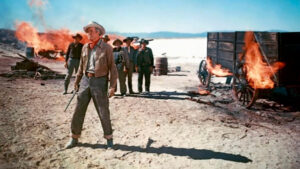
El hombre de Laramie (Anthony Mann, 1955)
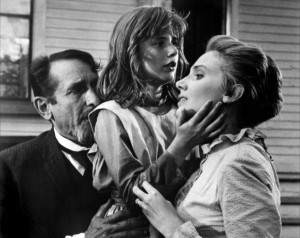
The Miracle Worker
Con la misma edad, un día al regresar del colegio vi Rojos y blancos (Csillagosok, Katonák, Miklós Jancsó, 1967), ambientada durante la Primera Guerra mundial en la puszta húngara. Me pareció una rareza, no entendí nada pero, a pesar de su frialdad, me cautivó la coreografía de sus movimientos de cámara. Ignoraba que se llamaban planos secuencia.
Y Jancsó empleaba aquí una de las más bellas combinaciones visuales que se puedan imaginar: el formato scope en blanco y negro. Esa misma elección tomaba Robert Rossen para potenciar el drama en El buscavidas (The Hustler, Robert Rossen, 1961) que, poco después, tanto me gustó.
Un par de años más tarde vi Marnie (Alfred Hitchcock, 1964) frente a la cual percibí que la cámara y el color permitían explorar algunas zonas turbadoras de nuestro ser, hasta alcanzar algo cuyo nombre desconocía: lo inconsciente. Además, por primera vez la versión original subtitulada me permitía saborear un concierto de voces en un idioma distinto.
Mientras dormían mis familiares la versión original, escuchada con volumen bajo, se convirtió en un reiterado placer clandestino, gracias a la programación de los Ciné Club de Antenne 2 y el Cinéma de Minuit de FR 3. Sí, entonces vivía en Francia. Memorable fue para mí el pase televisivo de La sala de música (Jalsaghar, Satyajit Ray, 1958), tres o cuatro años más tarde. Bajo la mirada del cineasta bengalí, del que ignoraba hasta el nombre, el hipnótico paso del tiempo anestesiaba la razón y lo cotidiano se cargaba de sensualidad.
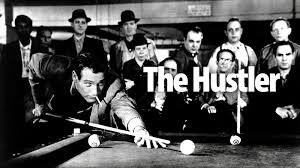
The hustler
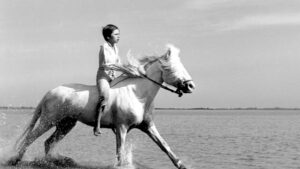
Crin Blanca

Jalsaghar
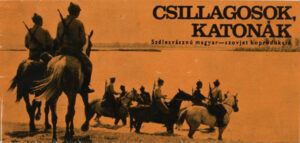
Rojos y blancos
Muy sensorial era también un mediometraje que vi con nueve años creo en el patio del colegio, mientras llovía: Crin Blanca (Crin Blanc, Albert Lamorisse, 1953). Lo olvidé durante muchos años, aunque supongo que me habré identificado con el joven Folco capaz de cabalgar al indómito purasangre en las dunas de Camarga.
Si algo he aprendido con respecto a la noción de mise en scène es porque tuve la fortuna de ver Los pájaros (The Birds, Alfred Hitchcock, 1963) con trece años. Nunca ha mermado mi admiración por aquella audaz epifanía, por suerte carente de explicación racional, rayana en lo abstracto y sazonada con suspense.
Luego vi Un condenado a muerte se ha escapado (Un condamné à mort s’est échappé, Robert Bresson, 1956). La verdad, no recuerdo qué sentí frente al filo de tan cortante control artístico, aunque el espacio sonoro y las elipsis se fundían de manera milagrosa en un mosaico de planos muy fragmentados.
Durante la adolescencia empecé a ver muchas películas en la pantalla grande. Entre los choques más profundos se encuentran diez o quince películas americanas, ásperas y vitales, rodadas durante los años setenta. También me fascinaron la mineralización del mundo filmada por Antonioni, los frescos de Visconti y su uso pictórico del color. Y algunos rostros femeninos dejaron una huella indeleble, no menos que sus siluetas y sus voces.
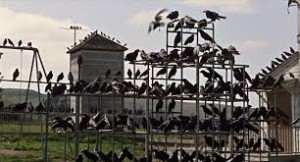
The Birds
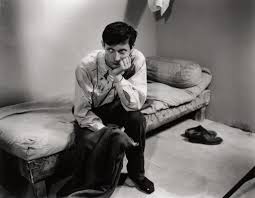
Un condenado a muerte se ha escapado
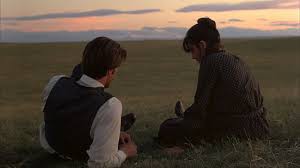
Days of Heaven
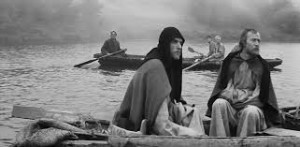
Andreï Rublev
Entre todas aquellas películas importantes en mi incipiente memoria de espectador quiero destacar dos: Días del cielo (Days of Heaven, Terrence Malick, 1978) y Tabú (F W Murnau, 1931), la primera parca en palabras, la segunda silente, ambas líricas y ubicadas en una naturaleza todopoderosa.
Pero por encima de todas he de colocar Bonnie and Clyde (Arthur Penn, 1967) y Andreï Rublev (Andrei Tarkovski, 1967), vistas por casualidad apenas cumplidos los diecisiete años. Valga decir que mi vida de espectador dio un vuelco y que sigo considerando el último episodio de la película de Tarkovski (la fundición de la campana) uno de los momentos más hermosos de la historia del cine.
Después traté de concederme tiempo para conocer y comprender el cine.
Y luego empecé a escribir y a filmar…